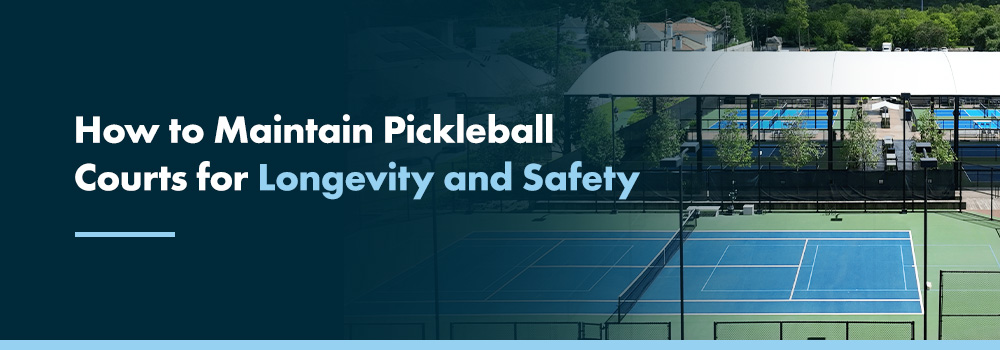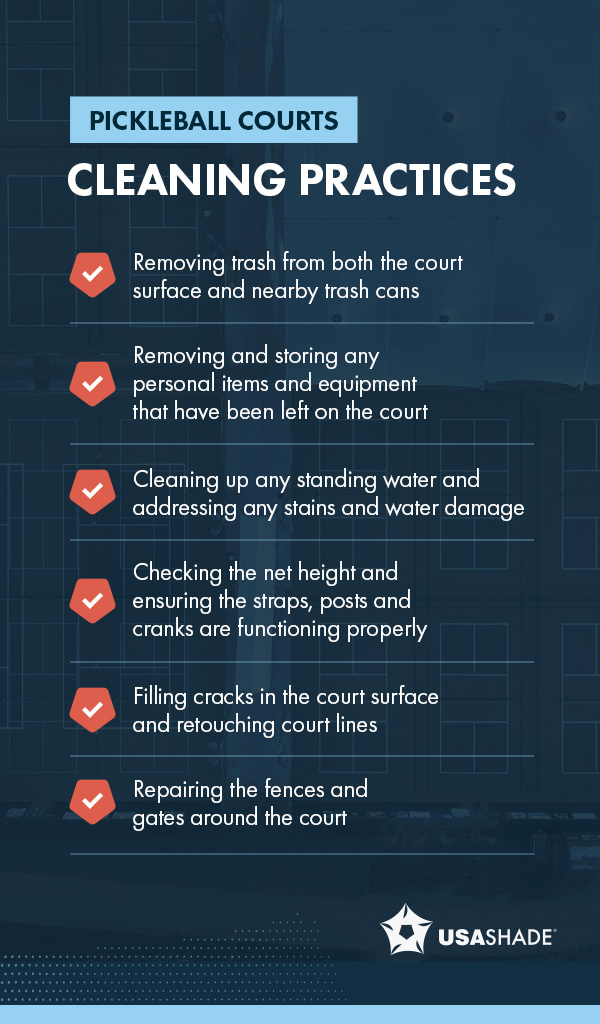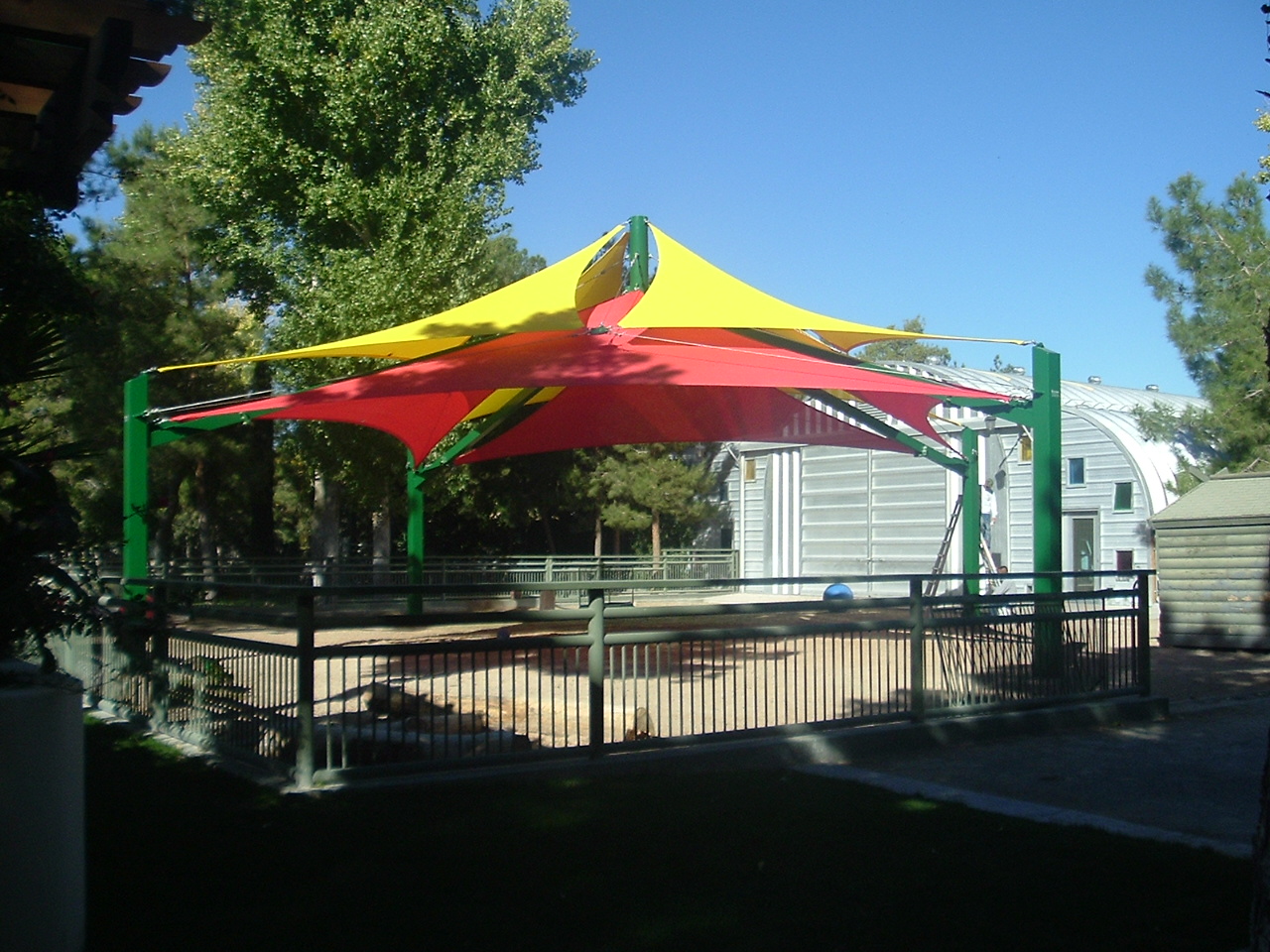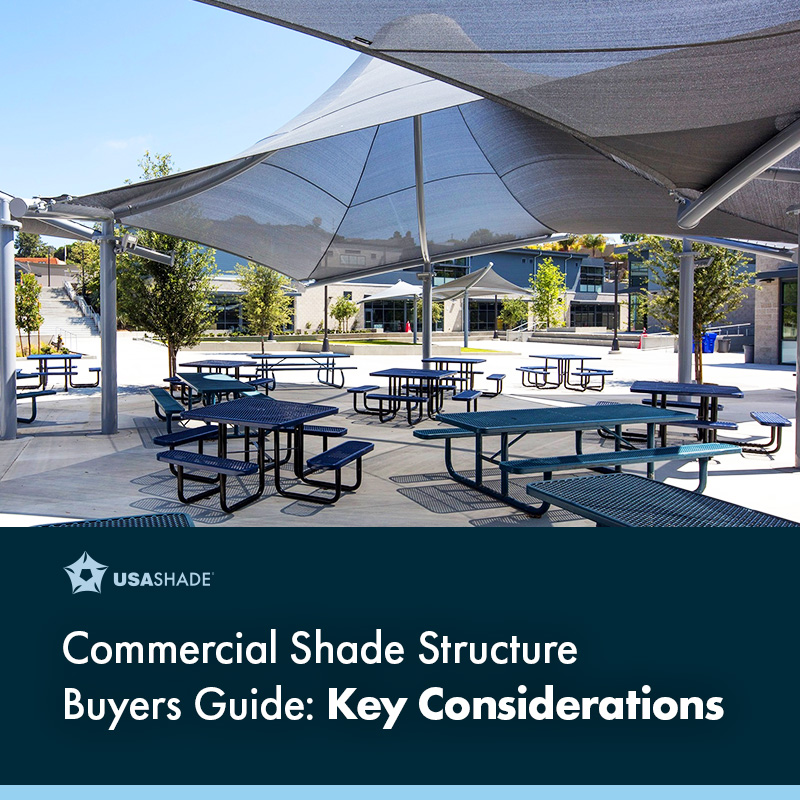
Pickleball has exploded in popularity in recent years, with 4,000 courts being constructed in just the U.S. in 2024. This increased attention for pickleball also means increased use of its courts. Pickleball courts always experience their share of wear and tear, but that rate has only quickened as the player population has expanded. As such, court owners have had to implement new maintenance methods to keep courts clean and functional for players and spectators alike. Courts last longer as a result, too.
Maintaining a pickleball court is harder than it looks, however. While it might seem easy to brush fallen twigs and leaves off the court, you and your team have to do that on a regular basis while also clearing dirt from the courts, assessing net integrity and repairing damaged baselines. There’s a lot to keep track of, and each practice takes time and knowledge.
That’s where we come in. Our guide to pickleball court maintenance will show you and your team how to maintain your pickleball court so that it lasts longer and serves its players better.
Your Essential Pickleball Court Maintenance Schedule
Whether you own one court or several, you and your team should stick to a consistent court maintenance schedule. Regular cleaning and upkeep ensure that the court is usable and safe for your players. They also save you money in the long term by extending the court’s life span.
With those ideas in mind, let’s take a look at the best practices for pickleball court maintenance.
Daily Walk-Throughs
Every day, the court should be assessed to determine if repairs or more in-depth cleaning are needed. You can do this with just a five-minute walk around the court space. During your walk-through, be sure to:
- Spot and remove surface debris, such as leaves, twigs and trash.
- Empty any trash cans on and around the court.
- Look for and clean up any standing water on the court, as it can lead to stains, water damage and slick spots.
- Remove and store any equipment, clothing or other belongings that have been left on the court.
- Ensure the net has the right amount of tension and sits 36 inches high at the sides and 34 inches high in the center.
On a good day, the walk-through will take just the five or so minutes needed to inspect the court closely. On other days, however, it may take half an hour or more, especially if it has stormed in your area recently.
The daily walk-through can be a hassle at times. It can be frustrating to empty trash cans and pick up the garbage people have left behind. In the long run, however, doing so is the most important court maintenance practice there is because it makes the space comfortable and safe for people to use.
Weekly Upkeep
Once per week, you and your team should also perform a more in-depth assessment of the court’s health. You can then decide where more attention is needed and take care of any emerging issues. Many courts do this weekly inspection at week’s end, but you can place it wherever is most practical for your schedule.
The first thing to examine is the court surface itself. Look for cracks, stains, water damage and other signs of wear. You may be able to remove mold and stains with on-hand cleaning supplies. You can also fill in small cracks with acrylic filler.
More serious damage may require more serious repairs, however. For example, if your court has an ineffective drainage system, you will likely need to have the court or at least part of it redone. Courts also need to be resurfaced periodically to protect players from cracks and other damage.
Nets and posts can also be inspected more closely during this time to ensure they are stable and operating properly. Over time, net straps and the net itself can sag. Posts and net cranks may also become damaged or rusty. Some of these issues are immediately fixable, but others will require more effort. Weekly upkeep allows you to spot these more serious problems and address them before they get worse.

Monthly Inspection and Deep Clean
Closely inspect the court at the end of each month. Pay special attention to:
- The court lines, which are susceptible to chips, cracks and fading.
- Any cracks in the court’s surface.
- The fences and gates that contain the court, which are susceptible to bending, sun damage and rust.
- Tough grime and scuff marks that may have accrued on the play area.
- Net straps, posts and cranks to ensure they are functional and healthy.
Once you have identified any problem areas, it’s time to begin the deep clean. Gently wash the court surface with a mild detergent to remove any grime, scuffs and other marks. Use a mop for general cleaning, but keep a heavy-duty brush on hand to manage more resilient marks and stains.
Court lines, nets and fences will require a bit more elbow grease to fix, however. Retaping or drawing court lines is typically the easiest, as you likely already have the tools to do so on hand. Filling in cracks is also simple, so long as you have acrylic filler handy.
Repairing a damaged net or fence typically means having parts shipped in and/or hiring someone to install them, so these jobs often take longer. You may be able to put off some of these repairs if they don’t directly affect the play area, but you should still make note of all issues each month.
Annual Cleaning and Long-Term Planning
At the end of each year, many court owners choose to roll all the previous cleaning techniques into one all-inclusive cleaning process. However, new cleaning practices may also be added to the process. The list of cleaning tasks usually includes the following:

- Removing trash from both the court surface and nearby trash cans
- Removing and storing any personal items and equipment that have been left on the court
- Cleaning up any standing water and addressing any stains and water damage
- Checking the net height and ensuring the straps, posts and cranks are functioning properly
- Filling cracks in the court surface and retouching court lines
- Repairing the fences and gates around the court
Power washing is typically used in place of the bucket and mop method for court washing, however. The high-powered water stream allows for more efficient and effective cleaning. You may find it easy to remove hard stains and marks that were once impossible to remove.
At year’s end, you can also invest in fully repairing the court surface by patching larger cracks and resurfacing the entire court. Both may require working with contractors, but they will lead to a court that is safer and more comfortable to use for everyone. Shoring up cracks prevents trips and odd bounces, while resurfacing gives the court superior traction and normalizes the way the ball interacts with the court.
Throughout the year, you can budget funds to prepare for these necessary cleaning practices. Resurfacing is especially important, and you can even build a relationship with resurfacing professionals in your area to ensure the process is completed reliably and on time. Shoring up cracks and repairing fences and netting should also be included within your long-term planning process. It’s always a good idea to set aside funds in case unforeseen repairs are needed, such as those caused by a drainage issue.
A Guide to Nets, Fencing and Court Surroundings
Now that we’ve discussed how to maintain pickleball courts themselves, let’s look past the court surface to the systems around it. These are the mechanisms that support play and create a more comfortable environment for both players and spectators. Maintaining them is just as important as maintaining the court.
Net and Post Maintenance
The nets and posts make pickleball possible, so caring for them is vital. There are two major types of netting systems — portable and permanent.
Portable netting systems tend to be rust-resistant since they are often made of plastics and other non-metal materials. Due to their mobility, however, the nets and posts tend to be more susceptible to tangles, bends and tears. A tangled net can be resolved, but bent posts and torn nets may require full-blown replacements if they are severe enough. The only way to avoid this problem is to prevent the damage in the first place.
Permanent netting systems are a different story. Their posts are far more durable, and the netting is unlikely to get tangled unless it is removed from the posts. Tears are still possible, though. If they are severe enough, you may need to purchase a new net entirely.
The biggest challenge posed by permanent netting systems, however, is rust. The metal posts and cracks can rust over time if they are not lubricated properly. This problem worsens if you live in an area with heavy rainfall. You can combat this issue by periodically lubricating the posts and paying special attention to the crank assemblies, which are responsible for holding the net aloft from either side of the court.
Fencing, Windscreens and Surroundings
The environment around the court must also be cared for to create a comfortable, functional play area. Fencing keeps the pickleball from flying or rolling away during play. Windscreens minimize the effects of wind on play. Both require a little extra care to keep them healthy. Trees that extend over the court should also be trimmed to minimize court disruptions.
Chain-link fences and gates can grow loose or rusty over time. This will impact your court’s appearance and can impede gate function. You can avoid rust by treating and lubricating gate hinges regularly. Rusty links should also be treated when necessary. Loose links can be retightened or replaced entirely. Some links can also bend and point toward passersby, which can result in cuts and punctures in extreme cases. Any such links should immediately be capped and turned back into the fence itself.
Windscreens are not vulnerable to rust or bending in the same way, but they are susceptible to tears and dirt. Regularly wiping down the screen with water can keep it clean and eye-catching. You can even use a power washer in extreme cases. To decrease the risk of tears, however, ensure that any sharp links are capped and pointed away from the screen. You can also place the windscreen out of players’ reach so that it can’t be tampered with.
Some trees in the area around the court may grow over and around it. When they do, their branches and leaves will likely begin to fall onto the court, even during play. Many court owners combat this problem by regularly trimming the overhanging branches. You can do this by investing in a ladder and a tree branch trimmer, though a second person should always be there to support the ladder. A telescoping tree branch trimmer can also work.
The Critical Role of Shade Structures in Court Preservation
The sun can pose as much of a problem for your court as dirt and water can. It can make the court uncomfortable in the summer months while causing the play area to crack and fade.
Pickleball court shade structures minimize these effects in the same way that windscreens minimize the effects of wind. By hanging over the court, they keep it cool for players and spectators. They also shield people from harmful sun exposure and minimize ultraviolet rays’ ability to damage the court. In doing so, they can extend your court’s life span and attract new players. They may even reduce your court’s overall maintenance costs and the time you have to spend keeping it clean.

Maintaining these shade structures for pickleball courts is also relatively simple. While you will need a ladder to access them in many cases, wiping them down and clearing off debris is usually all it takes to keep them up and running.
Upgrade Your Business’s Pickleball Courts With USA SHADE
Knowing how to maintain a pickleball court is only half the battle. Additional court features can make maintenance easier and improve the overall pickleball experience. USA SHADE specializes in creating custom shade structures that do all this and more for your pickleball business. We have been doing exactly that for over three decades and have partnered with various types of organizations, from schools to governments. We work with your business throughout the process to craft the shade structure of your dreams.
To learn more about our pickleball shade structures, fill out our contact form or give us a call at (855) 939-4877 today.






